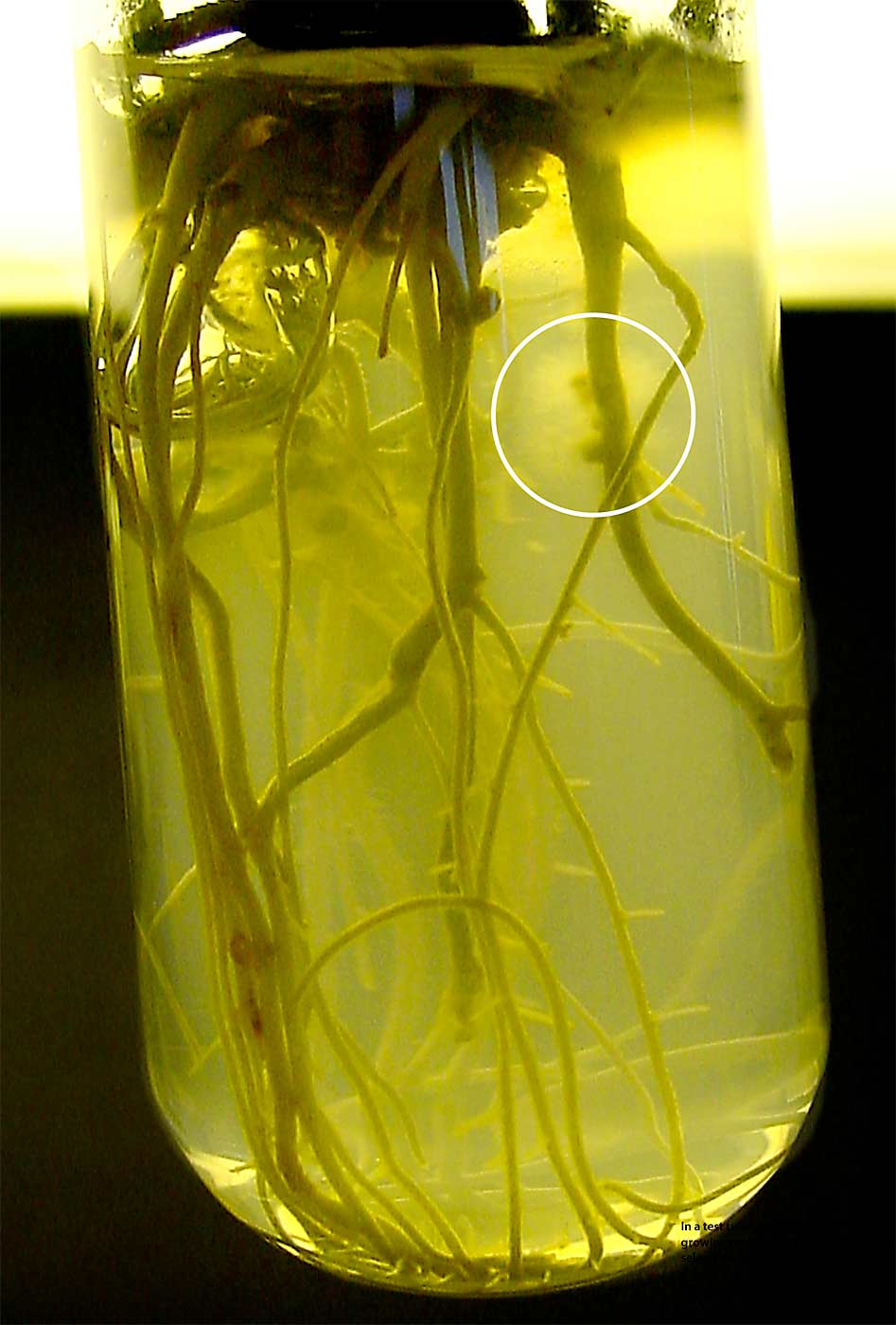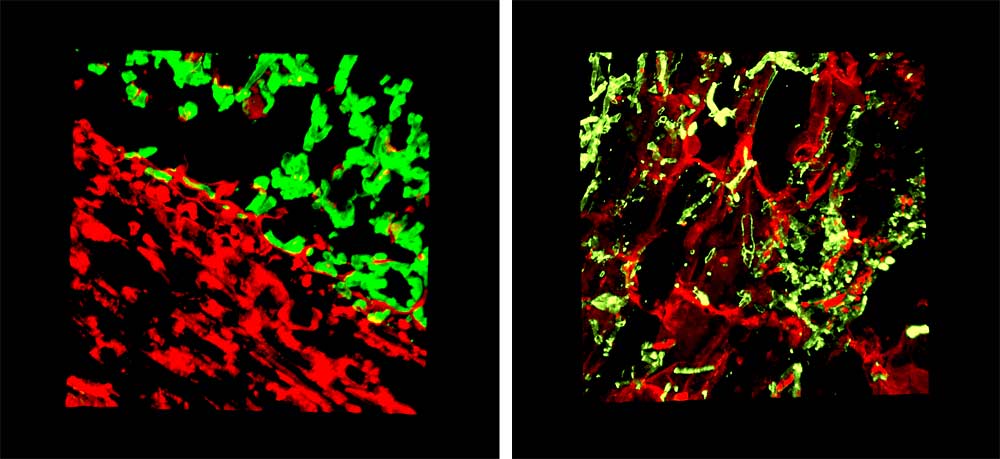In the southeastern U.S., repeatedly replanted peach orchards result in trees that are like sitting ducks for soilborne pathogens.
Most growers plant on Guardian rootstocks, which were bred by the U.S. Department of Agriculture to be resistant to peach tree short life. However, they are susceptible to Armillaria — the wood decay fungus that today poses a major economic threat and is the focus of research and breeding efforts across a variety of growing regions and crops.
“Ultimately, what we want is to have Guardian with armillaria tolerance,” said Ksenija Gasic, Clemson University’s peach breeder and the leader of a multistate research team that recently received a $5 million grant from the USDA’s Specialty Crop Research Initiative (SCRI) to focus on armillaria root rot solutions. The team includes researchers in the Southeast, where the disease costs peach producers about $8 million in lost production every year; in Michigan, where it poses a threat to tart cherry production; and in California, where it impacts almonds and peaches.

“Right now, peach trees are dying at 6 or 7 years old, which is the peak of production when growers should start to get their money back,” Gasic said. She’s focused on the long-term solution that would come from resistant rootstocks, while colleagues in horticulture and pathology are looking at management strategies to extend the life of orchards on infected soil, such as growing trees on berms and then excavating the soil around the root crown to slow the progression of the root damage.
Each region deals with a different species in the Armillaria genus, all of which can lurk in root pieces for years after an infected tree is removed, waiting to infect a growing replant. That’s why it’s a particularly serious threat in areas such as South Carolina and Michigan, where suitable farmland is limited.
“We have some excellent fruit sites along Lake Michigan, but they are limited, and so when they get infected, they can’t replant to cherry,” said Amy Iezzoni, the tart cherry breeder at Michigan State University. “It’s a high priority to the Michigan industry to find solutions. That’s why this SCRI project is so wonderful.”
Putting the gene pool through the gauntlet
The new grant builds on work begun under a multistate block grant in 2017 to evaluate the armillaria susceptibility of all the Prunus accessions in the USDA germplasm collection, Gasic said. Such screening had not previously been done because the pathogen doesn’t reliably grow in potted plants typically used for pathology trials.
“The biggest challenge has been inoculating plants in the greenhouse,” said Kendra Baumgartner, a USDA plant pathologist at the University of California, Davis, and a partner under the new grant. “It’s a wood decay fungus, so it needs woody tissue to survive.”
But new tissue culture techniques have allowed the team to ramp up the research. In her lab, Baumgartner grows the Prunus cuttings in an agar gel she discovered can support both the fungus and root growth. If a selection can grow for a few months under those extremely stressful conditions, it’s worth further evaluation.
Gasic uses that screening approach as the first step in an evaluation gauntlet. But in the agar, the roots never really mature. So, she propagates survivors to ensure there are replicates to test in another technique, growing the plants in a phenolic foam substrate that allows the Prunus roots to mature and then be inoculated with the pathogen. Those that continue to grow well are then sent for analysis under a microscope, so the researchers can verify that in a resistant genotype, the fungus is unable to penetrate the root the way it can in susceptible rootstocks.

“We can see how the Armillaria is lining up on the edge of the root, but something is preventing it from penetrating or clogging,” Gasic said. “This tolerance that we see, it is in vitro. We don’t know what it means in the field yet.”
With this approach, the team has screened 20 samples for each of 81 Prunus selections and confirmed the tolerance in four, which will become breeding parents, producing more seeds to evaluate.
“It’s a vicious cycle,” Gasic said. “With our genetic studies, we are hoping to find the genes responsible for the armillaria resistance, so we don’t have to do all the tissue culture screening.”
Next, they partnered with commercial nurseries to propagate the surviving selections and recently planted them in hot spots for both armillaria root rot and peach tree short life, Gasic said, as well as disease-free areas. This summer, the plan is to graft them with standard cultivars to assess horticultural traits as well.
That’s critical, said Chuck Fleck, research director at Sierra Gold Nursery, one of the commercial collaborators. (The nursery has also sent a few selections from its own program to be evaluated for resistance.)
“A rootstock comes along and says, ‘Hey, I’m really good against Armillaria.’’” he said. But it has to “have tolerance to the disease and a whole suite of other characteristics that make it an acceptable rootstock.”
And that evaluation takes time, far more than the recent grant will support, he added.
“We won’t know if we have anything (truly useful) for years,” Fleck said.
Resistance into rootstocks
For peach and almond growers, some armillaria-resistant rootstocks are already available, but none offer the perfect solution to all the pest and horticulture challenges growers face, Gasic and Baumgartner said. All the available resistance is derived from plum: Almond growers can plant on Marianna 2624, a plum rootstock, or Krymsk 86, a peach-plum hybrid, while peach growers can use peach-plum hybrid MP-29.
As a hybrid, MP-29 can’t be grown from seed, like many peach rootstocks are, but only through tissue culture propagation, which has limited the MP29 supply available to growers, Gasic said. It also produces a semidwarfing tree, 30 percent smaller than the standard Southeastern growers are used to farming in an open vase system.
Fleck, from Sierra Gold Nursery, said MP-29 propagates well but is likely to have limited use with almonds. In California, almonds are the major crop growers are likely to want to plant in infected soils.
Unfortunately, cherry and plum don’t cross well, so Iezzoni is starting from scratch in terms of breeding resistance into cherry rootstocks. Another MSU researcher, Pratima Devkota, collects samples from wild cherry species growing near areas known to be infected with armillaria, to see if there is a wild source of resistance already in cherry that they could tap. But so far, no luck from those selections, Gasic said.
Iezzoni is now making crosses with the resistant plum selections Gasic identified as a parent, but the plum-cherry hybrid seeds are rarely viable. She has a few seedlings growing from those crosses now but needs to confirm if they are, in fact, hybrids.
“I bagged the blossoms on this plum tree (to prevent unintended cross pollination), but I had to open the bag to pollinate it with one hand while swatting away the bees that are buzzing around,” she said.
Another priority for the research team is developing DNA tests that can confirm if seedlings are actually cherry-plum or peach-plum hybrids, before investing in evaluating them, she said.
Like Iezzoni, Gasic and UC Davis almond breeder Tom Gradziel are using the resistant selections as breeding parents, crossing them with each industry’s standards. Last year, those crosses resulted in over 500 seeds to send through the armillaria evaluation gauntlet — two of which passed and will go on to field trials.
Commercial nurseries produce those trees. Gasic said that by working with commercial nurseries in the early phases of this research to develop propagation approaches, they can accelerate the research and the likelihood that it will lead to economically viable selections.
For every selection that passes the pathogen screening tests, “we invest the time and effort to find the exact tissue culture conditions to propagate them easily,” she said. “Then, if it passes everything downstream horticulturally, we’ll already have a way to propagate it.”
—by Kate Prengaman






Leave A Comment